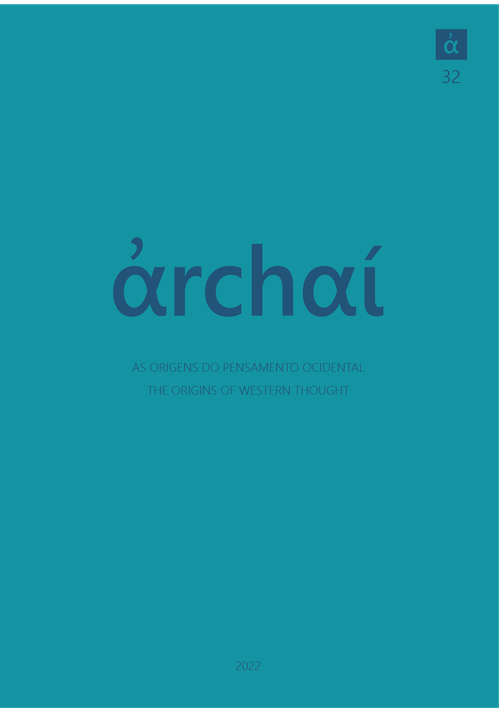Freud and (the absence of) Pandora
DOI:
https://doi.org/10.14195/1984-249X_32_23Keywords:
Freud, Hesiod, woman, Prometheus, PandoraAbstract
The Freudian theory of femininity is the object of several studies. We intend to make a contribution to this debate, but instead of approaching the Freudian texts in which woman appears explicitly, we aimed to read a specific Freudian text in which she appears not, although she should do so. It is the 1932 text Zur Gewinnung des Feuers, in which the father of psychoanalysis interprets the myth of Prometheus. The fact is that, in Hesiod, the figure of the first woman (Pandora) is central, and one cannot comprehend the myth in its totality without her. In Freud’s version, Pandora does not exist - she is not taken in consideration and is not even mentioned. Therefore, instead of the myth of Prometheus and Pandora, we have in Freud the myth of Prometheus - and that does not come without consequences. Thus, Freud’s masculine writing would lie not only where he expatiates on women, but also where she does not even appear.
Downloads
References
BRASETE, M. F. (2012). A criação da mulher, segundo Hesíodo. Teografias 2, p. 211-220.
CHANOCA, T. A. (2019). O lugar do mito de Pandora nos poemas de Hesíodo: Teogonia 570‐612 e Os trabalhos e os dias 54‐104. Ágora. Estudos Clássicos em Debate 21, p. 21‐42.
COFFEY, M. (1957). The Function of the Homeric Simile. The American Journal of Philology, 78, n. 2, p. 113-132.
FELMAN, S. (1981). Rereading Femininity. Yale French Studies 62, p. 19-44.
FREUD, S. (1908). Über infantile Sexualtheorien. In: Gesammelte Werke, Band VII. Frankfurt am Main, Fischer Verlag, p. 171-188.
FREUD, S. (1922). Über einige neurotische Mechanismen bei Eifersucht, Paranoia und Homosexualität. In: Gesammelte Werke, Band XIII. Frankfurt am Main, Fischer Verlag , p. 195-207.
FREUD, S. (1925). Einige psychische Folgen des anatomischen Geschlechtsunterschieds. In: Gesammelte Werke, Band XIV. Frankfurt am Main, Fischer Verlag , p. 17-30.
FREUD, S. (1927). Fetischismus. In: Gesammelte Werke, Band XIV . Frankfurt am Main, Fischer Verlag , p. 309-317.
FREUD, S. (1930). Das Unbehagen in der Kultur. In: Gesammelte Werke, Band XIV . Frankfurt am Main, Fischer Verlag , p. 419-506.
FREUD, S. (1931). Über die weibliche Sexualität. Gesammelte Werke, Band XIV . In: Frankfurt am Main, Fischer Verlag , p. 515-37.
FREUD, S. (1932). Zur Gewinnung des Feuers.Gesammelte Werke, Band XVI, Frankfurt am Main: Fischer Verlag, p. 1-9.
FREUD, S. (1933). XXXIII Vorlesung. Die Weiblichkeit. In: Gesammelte Werke, Band XV. Frankfurt am Main, Fischer Verlag , p. 119-45.
FREUD, S. (1940). Das Medusenhaupt. In: Gesammelte Werke, Band XVII. Frankfurt am Main, Fischer Verlag , p. 45-48 [1922].
LAFER, M. C. N. (2019). Hesíodo. Os trabalhos e os dias (tradução, introdução e comentários). São Paulo, Iluminuras.
LOMBARDI, T. (1994). Alcune considerazioni sul mito di Pandora. Quaderni Urbinati di Cultura Classica, 46, n. 1, p. 23-34.
MAGRATH, W. T. (1982). Progression of the Lion Simile in the “Odyssey”. The Classical Journal 77, n. 3, p. 205-212.
MARQUARDT, P. A. (1982). Hesiod’s Ambiguous View of Women. Classical Philology 77, n. 4, p. 283-291.
MORANI, M. (1983). Il nome di Prometeo. Aevum 57, n. 1, p. 33-43
RUDHARDT, J. (1986). Pandora : Hésiode et les femmes. Museum Helveticum 43, n.4, p. 231-246.
SHOREY, P. (1922). The Logic of the Homeric Simile. Classical Philology 17, n.3, p. 240-259.
SILVEIRA. L. (2020). Entre teses e textos: Como o tema da inferioridade da mulher aparece nos ensaios que Freud dedica à sexualidade feminina? Revista Aurora 33, n.58, p. 6-29.
TORRANO, J. (2012). Hesíodo. Teogonia (estudo e tradução). São Paulo: Iluminuras.
VERNANT, J. P. (1975). Le mythe prométhéen chez Hésiode. In : Œuvres : Religion, Rationalités, Politique I Paris, Éditions du Seuil, p. 751-764.
VERNANT, J. P. (1996). Les semblances de Pandora. In : Œuvres : Religion, Rationalités, Politique I I. Paris, Éditions du Seuil , p. 2032-2043.
ZAFIROUPOULOS, M. (2009). A teoria freudiana da feminilidade: de Freud a Lacan. Reverso 31, n. 58, p. 15-24.
Downloads
Published
How to Cite
Issue
Section
License
Copyright (c) 2022 Pedro Fernandez de Souza

This work is licensed under a Creative Commons Attribution 4.0 International License.
Given the public access policy of the journal, the use of the published texts is free, with the obligation of recognizing the original authorship and the first publication in this journal. The authors of the published contributions are entirely and exclusively responsible for their contents.
1. The authors authorize the publication of the article in this journal.
2. The authors guarantee that the contribution is original, and take full responsibility for its content in case of impugnation by third parties.
3. The authors guarantee that the contribution is not under evaluation in another journal.
4. The authors keep the copyright and convey to the journal the right of first publication, the work being licensed under a Creative Commons Attribution License-BY.
5. The authors are allowed and stimulated to publicize and distribute their work on-line after the publication in the journal.
6. The authors of the approved works authorize the journal to distribute their content, after publication, for reproduction in content indexes, virtual libraries and similars.
7. The editors reserve the right to make adjustments to the text and to adequate the article to the editorial rules of the journal.



